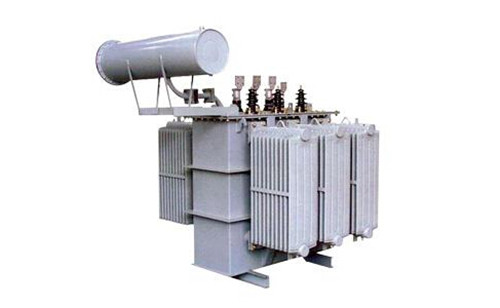Furnace transformers are transformers for suppliers of power supplies for electric furnaces. They can convert higher voltages to lower voltages suitable for use in electric furnaces. They are widely used in the metallurgical industry. They are used in electric steelmaking furnaces, in submerged arc furnaces, and arcs. Furnace, resistance resistance supplier furnace, salt bath furnace, single-phase graphitization furnace, industrial frequency induction furnace and electroslag remelting furnace transformer. Next, Xiao Bian introduced the structure characteristics of the electric furnace transformer and the characteristic parameters of the electric furnace transformer.

Electric furnace transformer structural features
The iron core of the electric furnace transformer is made of high-quality oriented silicon steel sheet, fully automatic cutting line processing, 45-degree full-angled joints, no punching, and latitude glass tape tying. The coil adopts the latest international main longitudinal insulating structure, and the winding structure and insulation are reasonably selected to ensure that the winding has sufficient mechanical strength. It has the characteristics of strong short-circuit withstand capability, strong overload capacity, high efficiency, low loss, safety and reliability.
Furnace transformer working principle
The electric furnace transformer is a power transformer of a steelmaking electric arc furnace, and the capacity of the electric furnace transformer is configured according to the size of the electric arc furnace and the smelting process. It meets the requirements of the smelting process through pressure regulation. Regulatory methods are classified into on-load voltage regulation and non-excitation voltage regulation.
Large-sized electric furnace transformer with on-load voltage regulation without series reactor, and no-excitation voltage regulating medium-sized electric furnace transformer can be divided into two types with a series reactor and without a reactor. The two structures can be at the highest Change the impedance under two voltages. The former changes the impedance by the input and removal of the series reactor. The latter changes the winding impedance by changing the connection mode of the high voltage winding of the electric furnace transformer itself.

Electric furnace transformer characteristic parameters
1, working frequency
Transformer core loss is related to the frequency, so it should be designed and used according to the frequency of use. This frequency is called the operating frequency.
2, rated power
Under the specified frequency and voltage, the transformer can work for a long time without exceeding the output power of the specified temperature rise.
3, rated voltage
Refers to the voltage allowed to be applied to the coil of the transformer and must not exceed the specified value during operation.
4, voltage ratio
Refers to the transformer primary voltage and secondary voltage ratio, there is no load voltage ratio and load voltage ratio difference.
5, no-load current
When the transformer secondary is open, the primary still has a certain current. This part of the current is called the no-load current. The no-load current consists of a magnetizing current (flux producing) and an iron loss current (caused by the core loss). For a 50Hz power transformer, the no-load current is substantially equal to the magnetizing current.
6, no-load loss
Refers to the power loss measured at the primary when the transformer secondary is open. The main loss is the core loss, followed by the loss (copper loss) of the no-load current on the copper resistance of the primary coil. This part of the loss is very small.
7, efficiency
Refers to the percentage of the ratio of secondary power P2 to primary power P1. In general, the higher the rated power of the transformer, the higher the efficiency.
Furnace transformer usage conditions
1, altitude: <1000m
2, the ambient temperature: +40 °C -25 °C
3, relative humidity of air: 90% (+25°C)
4, device type: outdoor
5, installation site: non-corrosive gas, no obvious dirt and Other areas
6, for steelmaking, non-ferrous metal smelting, withdrawal of various ferroalloys, silicon compounds and the withdrawal of pure silicon.
Furnace transformer working principle
The electric furnace transformer is a power transformer of a steelmaking electric arc furnace, and the capacity of the electric furnace transformer is configured according to the size of the electric arc furnace and the smelting process. It meets the requirements of the smelting process through pressure regulation. Regulatory methods are classified into on-load voltage regulation and non-excitation voltage regulation. Large-sized electric furnace transformer with on-load voltage regulation without series reactor, and no-excitation voltage regulating medium-sized electric furnace transformer can be divided into two types with a series reactor and without a reactor. The two structures can be at the highest Change the impedance under two voltages. The former changes the impedance by the input and removal of the series reactor. The latter changes the winding impedance by changing the connection mode of the high voltage winding of the electric furnace transformer itself.
Editor's summary: The structure characteristics of the electric furnace transformer and the characteristic parameters of the electric furnace transformer are introduced here, and we hope to be helpful to everyone. If you want to know more related information, you can pay attention to this website information.
Transformer furnace transformer
Prestige Mesh Fence,Wire Mesh Fence,Welded Arched Mesh Fence,Arch Top Double Wire Fence
Hebei Giant Metal Technology Co., Ltd. , https://www.wiremesh.pl
